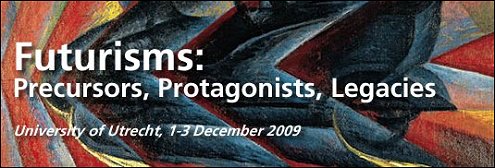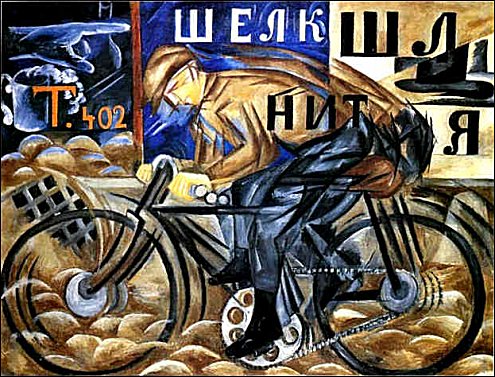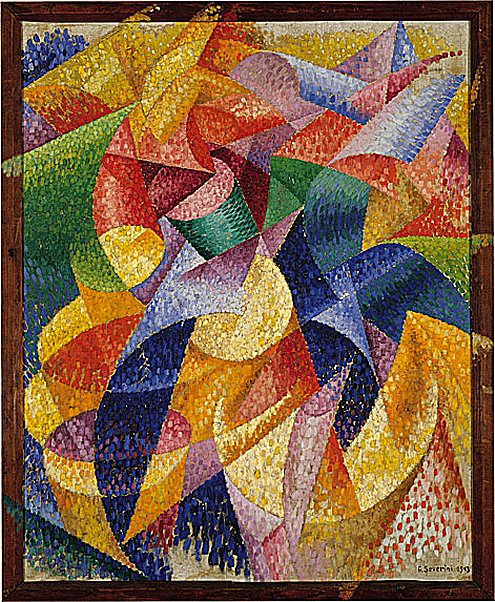Futurisms – Precursors, Protagonists, Legacies – International conference Utrecht University

F u t u r i s m s :
Precursors, Protagonists, Legacies
International conference – University of Utrecht
1-3 December 2009

A century after the launching of the first Futurist manifesto in 1909, and 65 years since Marinetti’s death on December 2, 1944, Futurism seems to be the one avant-garde movement that was most successful in enduringly inspiring artists and writers around the world and in thus bridging the gap between theory and praxis. This conference aims at a better/deeper understanding of Futurism’s significance by focusing on the (relative) innovative qualities of the movement (Precursors), lesser-known actual Futurist projects and careers (Protagonists) and its lasting cultural and political relevance (Legacies).
Like most avant-garde movements Futurism suggested to present a clear break with the art and ideas of the past. Yet many of its defining characteristics can be traced to earlier movements, artists and currents. Futurism’s defining forwards looking rhetoric tended to obscure these relationships as well as its own regressive character. The Precursors-segment of the conference will try to address these issues.
The canon of Futurist works and artists is fairly limited. The scope of the movement has been demonstrated in major exhibitions (catalogues), but many major works, concepts and careers remain relatively unknown. In the Protagonist-section the conference acknowledges the diversity of the Futurist project by showing, analyzing and discussing contributions that even most specialists, scholars and curators tend to leave out of the picture.

The Legacies-part deals with the heritage of Marinetti’s programme, which is overwhelmingly present, in the arts as well as in society at large. New internet applications have abolished boundaries of time and space. WiFi offers the opportunities already advocated in Marinetti’s concept of ‘wireless imagination’. Emerging young poets all over the globe engage in destroying syntax and introducing mathematical sign language, thus accomplishing on a worldwide scale Marinetti’s Futurist poetics of telegraphic language. After the success of concrete poetry and musique concrète in the 1950s, multimedia, mixed media and inter-mediality presently reign in the arts world. And also ideologically the Futurist legacy has not lost its topicality, nor its highly controversial impact, considering the re-emergence of Futurist ideas on the hygiene of war in the rhetoric on the war on terror.
Futurism’s presence in today’s world calls for reflection, both on the topicality of the futurist legacy during the past century and on its transformations. In mapping Futurism’s development and presence in technological, artistic and political terms, the conference hopes to gain better understanding of the movement’s legacy as well as of the cultural dynamics of transgression vs regression which in the long run determines Futurism’s lasting success.

Futurisms – Precursors, Protagonists, Legacies
Utrecht University
International conference
1 – 3 December 2009

Confirmed keynote speakers: Günter Berghaus (Bristol University), Giovanni Lista (CNRS, Paris), Marjorie Perloff (Stanford University) and Jeffrey Schnapp (Stanford University); confirmed invited speakers are Walter Adamson (Amory University, Atlanta), Timothy Campbell (Cornell University), Silvia Contarini (Paris-X Nanterre) and Luca Somigli (Toronto University).
Organisors: Geert Buelens (chair of modern Dutch literature, University of Utrecht), Harald Hendrix (chair of Italian Studies, University of Utrecht), Monica Jansen (assistant professor in Italian Studies, Universities of Utrecht and Antwerp) and Wanda Strauven (associate professor in Film Studies, University of Amsterdam).
Conference website: www.hum.uu.nl/futurisms

FLEURSDUMAL.NL MAGAZINE
More in: Futurism

